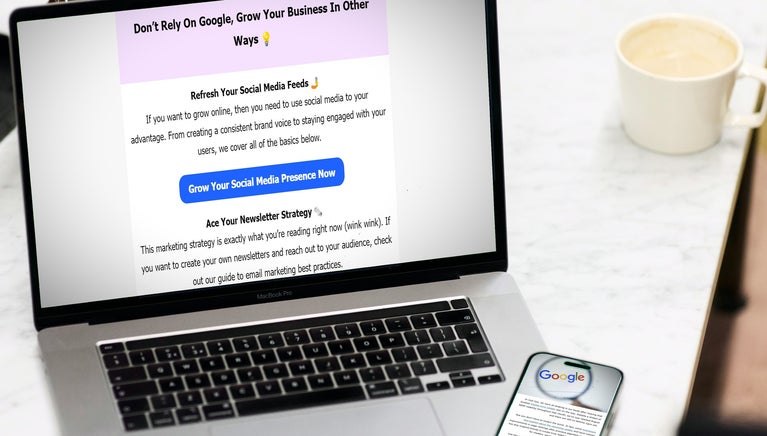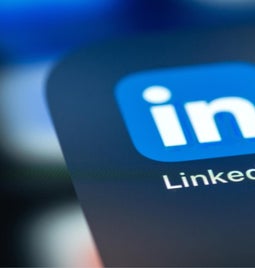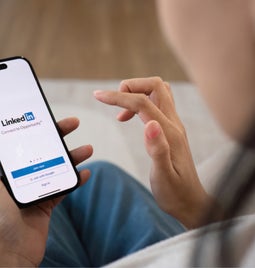How To Nail Your LinkedIn Profile as a Business Owner: My 3 Top Tips
We may receive a commission from our partners if you click on a link and purchase a product or service on their website. Learn more

If you want to grow your business on social media, did you know that you can use your personal LinkedIn profile to your advantage? By optimizing your profile as a business owner, you have the chance to build your brand’s authority, showcase your expertise with fellow professionals in your industry, and attract more customers.
But are you missing a trick or two on your LinkedIn profile? To help you make the most out of your account, my top tips below will help you craft a winning LinkedIn profile that’ll help your business stand out from the crowd.
1. Appearances Matter, So Make Your Profile Look Good!
Think carefully about your LinkedIn profile’s imagery, since you’re not only representing your personal brand, but your entire business. To create a positive first impression online, consider these visual aspects of your page:
- Your headshot – When building trust, your headshot should clearly showcase who you are. To avoid unintentionally catfishing people, make sure that it reflects how you look on an everyday basis. Don’t go overboard with any AI filters or editing apps. Your face is attached to your business after all, so you need to be recognizable.
- Your banner – The banner image is your chance to showcase a little bit more information about yourself and your business. When creating a banner using graphic design tools like Canva, you might want to feature your business’ colors, add clipart reflecting the industry you’re in, or feature your brand’s tagline. Whatever you decide to add, make sure that your branding is consistent!
- Your LinkedIn URL – If you haven’t already, I suggest changing your default LinkedIn URL into something more readable. An SEO-friendly URL for LinkedIn typically includes your full name alongside your job role or business name.
For further help, I reveal how to change your LinkedIn URL in my guide to the LinkedIn features you might not know about.

💡 Top Tip!
Worried about photo dimensions? The ideal size for a LinkedIn headshot is between 400 x 400 pixels, while a banner is 1584 x 396 pixels. Try to stick to these dimensions to maintain the quality of any graphics or photos.2. Be Confident Showcasing Your Skills, Qualifications, & Achievements
You need to cement yourself as a credible professional in your industry, so that’s why you should display your skills, qualifications, and achievements throughout your profile. Here are a few ways you can do this:
- Add your list of skills – The “Skills” section in your profile is your chance to showcase skills that are relevant to your business and industry right now. However, don’t get carried away and include a huge unorganized list of skills. Try to stick between 10-15 skills instead to not overwhelm your profile visitors.
- Display the right endorsements – You might already have endorsements on your profile from other professionals, but do they all reflect your current job role and business? If not, you may need to remove some, or reach out to other professionals in your network who can offer you newer, more valuable endorsements.
- Share relevant content – Was your business recently featured in a piece of media content? Or have you worked on a creative project you’re particularly proud of? This is your sign to pin and display this content on your LinkedIn profile. That way, visitors can see what you and your business have been up to lately.

💡 Top Tip!
As tempting as it can be to use buzzwords like “experienced,” “strategic,” or “enthusiastic” on your profile, try to avoid them when possible. Your skills should speak for themselves, so you shouldn’t have to rely on these overused adjectives to prove your expertise or trustworthiness as a professional.3. Check That Your LinkedIn Summary Targets Your Audience
As a business owner, you probably have a clear idea of what target audience your brand is trying to target online. So, it only makes sense that your LinkedIn profile “Summary” is also written with them in mind.
In this space, you need to give a clear overview of your career, while including any significant milestones or achievements – and you only have 2,600 characters to make it work.
If you need some help crafting your summary, here are my three quick tips:
- Hook the reader in – You have 300 words to hook readers, since the rest of your summary will be hidden behind a “See more” button. When writing your summary, think about your target audience and what they want to hear. They might want to know why you’re an authoritative figure in your industry, hear why you started your business, or learn more about the person behind the brand.
- Inject your brand’s tone of voice – Is your brand personality witty and playful? Or maybe sophisticated and luxurious? Whatever your brand is like, this tone of voice should be reflected in your summary to build a sense of cohesion between your LinkedIn profile and your business.
- Don’t forget your proof – If you’re making a significant claim in your summary, you had better have the proof to back it up with. Depending on your industry, this could include specific numbers and stats, or testimonials from past customers.

Nailing A LinkedIn Profile for Your Business: Final Thoughts
To summarize, if you want to craft a compelling LinkedIn profile for your business, your page should showcase your skills and accomplishments, demonstrate a clear sense of branding across your imagery and copy, and ultimately reflect what your business is all about.
Potential customers who want to learn more about your business could be looking at your LinkedIn profile during the research stage of the sales funnel, so you need to leave them with a positive impression. That’s why I suggest that you revisit your LinkedIn profile now and make sure that it’s reaching its full potential.





Leave a comment